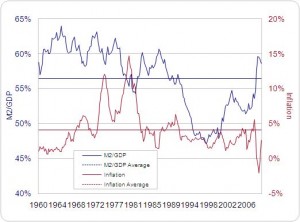With much of the market’s attention being focused on the Fed’s QE2 announcement & last Friday’s monthly jobs report one storyline is flying under the radar. It’s been a few weeks since I’ve used the term “sovereign debt crisis” on this blog but it looks like it might be making a triumphant return. The WSJ ran THIS POST on the Marketbeat blog this morning entitled, “Euro-Zone Debt Problems Getting Worse“. In it the author points out that the yields on Irish and Portugal’s government debt have been rising as of late which means the fear of default are growing. Irish government 10-year bonds are currently trading with a yield of 9.24% and Portugal’s at 7.33%. To put this in perspective German 10-year bunds are currently selling at a yield of 2.41% and the US at 2.65%.
This could lead to another “flight-to-safety” in which investors of European bonds sell their positions and reinvest that money in US debt securities which are deemed to be less risky. If they do that would benefit mortgage rates.


